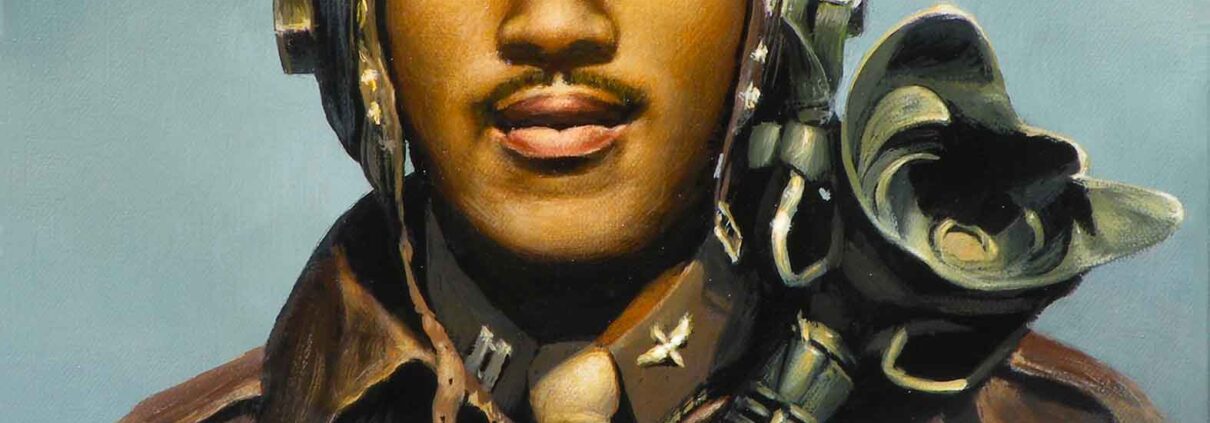Tuskegee Airman Charles Hall
Tuskegee Airman Charles Hall
Tuskegee Airman Charles Hall made history for himself and his fellow 99th Fighter Squadron pilots.
After three years of college, Charles enlisted in the US Army as an aviation cadet. He was a member of Tuskegee Class 42-F-SE. On completion of training, Charles B. Hall was commissioned as a second lieutenant, U.S. Army Air Corps, on 3 July 1942. He was assigned to the 99th Fighter Squadron.
The 99th FS was the first unit of the Tuskegee trained pilots to be deployed overseas. The squadron was sent to North Africa, 2 April 1943, as part the 33rd Fighter Group.
On 2 July, the 99th was escorting USAAF B-25 Mitchell medium bombers near Castelventrano, in western Sicily. Enemy fighters intercepted the flight.
In Charles own words, “It was my eighth mission and the first time I had seen the enemy close enough to shoot at him. I saw two German Focke-Wulfs following the bombers just after the bombs were dropped. I headed for the space between the fighters and bombers and managed to turn inside the Jerries’.
He continues, “I fired a long burst and saw my tracers penetrate the second aircraft. He was turning to the left, but suddenly fell off and headed straight into the ground. I followed him down and saw him crash. He raised a big cloud of dust.”
The aircraft the Charles and the 99th were flying was the Curtiss P-40L Warhawk. This version of the P-40 was powered by a Packard built, Rolls Royce “Merlin” V-12 engine.
Hall was the first of the 99th Fighter Squadron and first Tuskegee Airman to have downed an enemy aircraft. For this, he was awarded the Distinguished Flying Cross. Before the war ended, he had flown 198 combat missions and had been promoted to the rank of major.

 Stan Stokes
Stan Stokes
 Stan Stokes
Stan Stokes